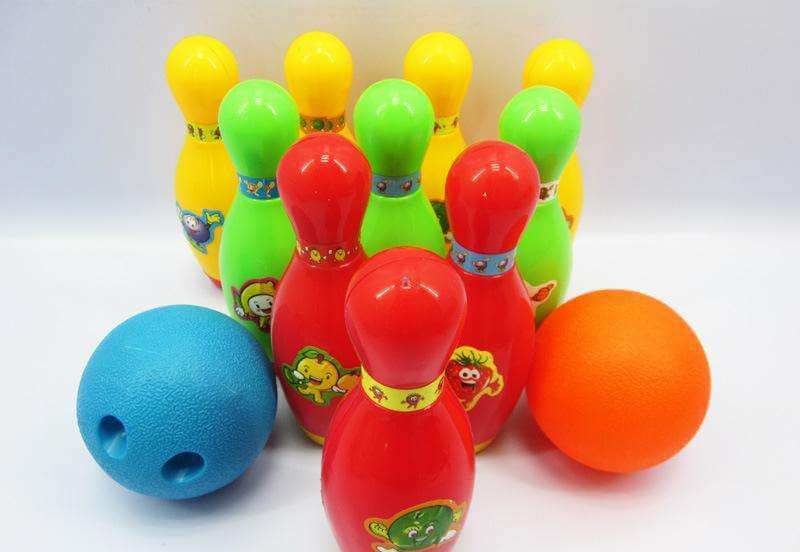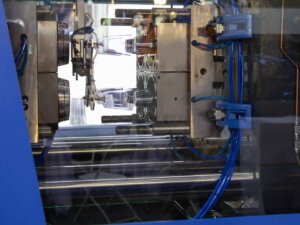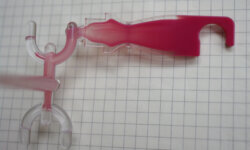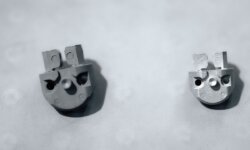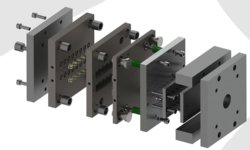For a long time, making toys in an amateur capacity was a difficult thing to do. You could use wood, or you could piece things together from recycled components, but high-quality toymaking was a practice exclusively carried out by big and medium-size toy companies: giants like Mattel and LEGO and the like on the higher end and, on the lower end, smaller companies that still had some degree of capital.
Over the last decade, the landscape has changed, and amateur toymakers have been the lucky beneficiaries. With the advent of consumer 3D printers, amateur toymakers can now craft their creations using CAD software before 3D printing them in their own home. All it takes is a printer, some material and a knack for digital design and voila: plastic, colorful toys without going to the store.
The problem with 3D printed toys, however, is their quality and surface appearance. While printers are great for turning ideas into physical items in a short space of time, the surface finish of a 3D printed model pales in comparison to an injection molded one. In other words, desktop FDM 3D printers are great, but it’s debatable whether you can use them to make a marketable toy or figurine. The surface is rough, layer lines are visible and the finished part may not be strong enough to resist the rough handling of a child.
Fortunately, there is another way. Concurrent to the increase in desktop 3D printers has been a rise in accessible low-volume manufacturing services, with industrial processes like injection molding now more affordable than ever — for everyone, not just the biggest manufacturers.
This development has had important consequences for independent toymaking. Since rapid tooling has massively reduced the cost of tools for injection molding, it is now possible to order relatively small batches of injection molded parts with a low initial outlay. This is big news, because it means an amateur toymaker can go straight a manufacturer like 3ERP, discuss the project, and receive their finished toys within weeks. 3D printing is still cheaper for a single model, of course, but for a few hundred or few thousand items, injection molding is faster and more affordable. (For one-off items or very low quantities, 3ERP also offers a professional 3D printing service.)
So how would one go about creating their own injection molded toys or figurines? In essence, the first steps are the same as they are with amateur 3D printed toymaking, in that CAD software can be used to design a 3D model on a computer.
There are some differences though. 3D printing comes with its own set of design considerations (caution with overhangs, orientation, difficulty with curved edges, etc.), and these considerations inform the way a designer puts together a certain toy or figurine. Injection molding, on the other hand, requires a different way of thinking. Read our blog post on designing parts for injection molding for some basic tips.
The newfound affordability of small batches of injection molded toys has had important consequences. While 3D printed toys and figurines generally have no re-sale value due to their unprofessional surface finish, the manufacture of injection molded toys is a different story. Using a resource like 3ERP’s rapid tooling and injection molding service, it is easier than ever to actually make money from toys. The reduced costs of manufacture have effectively democratized the business, giving independent creators the power to design, manufacture and sell their products on their own.
Of course, the rise of independent toymaking has been aided by other factors besides the affordability of rapid tooling, one of which has been the rise of crowdfunding platforms. Browse sites like Kickstarter and Indiegogo and you’ll find countless ambitious toy designers raising funds for their creations. A lot of them sell digital files only, but the success of the direct-to-consumer business model shows that customers are willing to invest in creativity rather than buy exclusively from established toymakers. Moreover, being able to raise funds from customers up-front makes investment in rapid tooling and injection molding even more affordable.
Like any other business venture, ordering a batch of injection molded toys comes with its risks: doing so requires knowledge of the market and, of course, the skill to design a marketable product. However, thanks to affordable low-volume manufacturing services, the barriers to entry to the toy industry are lower than they ever have been.
Get in touch with 3ERP to discuss the capabilities of our injection molding services.
